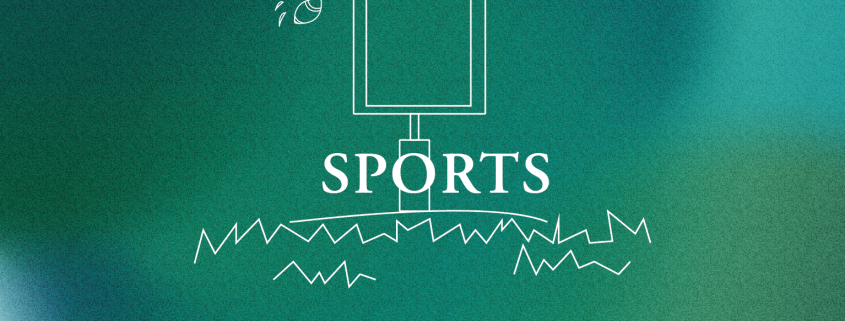Line of Scrimmage: LGBTQIA+ athletes stand on the shoulders of those before
Compared to 20 or even 10 years ago, the United States has become much more accepting of people in the LGBTQIA+ community — although prejudice against queer people remains a serious and too prevalent issue. That pattern has transpired in the sports realm in the U.S. and in other parts of the globe. With athletes like Megan Rapinoe, Sue Bird, Carl Nassib and Josh Cavallo making strides in their respective fields, it’s allowing for a continued push for more people to be comfortable with publicly identifying themselves while actively playing.
In previous decades, it has been difficult for people to be open about their sexual orientation or identity, especially in the ’80s and ’90s during the height of the HIV/AIDS epidemic. With so much stigma against those with HIV/AIDS, it only made it a more difficult conversation to have. This would prove to be the case with diver Greg Louganis, who came out in 1994 and then announced that he was HIV-positive in 1995.
“Greg Louganis, the diver, came out partly because he hit his head on a dive and bled and then had to reveal publicly that he was HIV positive. And that, I think, made it very hard for him and anybody else who might have thought about coming out,” said Susan Cahn, a professor at the University of Buffalo. “I really don’t think it’s gotten easier for men until maybe the last five to eight years.”
Over time, more and more players would come out as gay with John Amaechi, Michael Sam, Robbie Rogers and Thomas Hitzlsperger being some of the more high-profile male athletes to come out during the late 2000s-to-early 2010s, although Amaechi and Hitzlsperger came out during their retirement. While the number of male athletes publicly coming out continues to grow in all sports, the number is still small in comparison to the women’s side.
“You have some of the great players of all time in the WNBA: Brittney Griner, Sue Bird, Diana Taurasi … So it’s different being out in the women’s game because there are so many LGBT women in elite level women’s sports. Almost a quarter of the WNBA is publicly out,” said Cyd Zeigler, co-founder of Outsports, a sports media outlet primarily focused on LGBTQIA+ athletes. “So there are simply more women who are LGBT in the women’s game and elite level sports. Why is that? That’s a question I’ve asked a lot of people that nobody has the answer. But that’s one of the reasons is that when half of your team is gay, it’s just easier to come out.”
As Zeigler said, some of the best players in their respective sports on the women’s end are LGBTQIA+, and some are very vocal about it and push for a discussion to be had allowing openness.Rapinoe, who has been a leading figure for women’s soccer in multiple arenas, is a perfect example. She took charge of the equal pay movement for the United States Women’s National Team as well as being one of the best players in the world. Seeing that these elite athletes are out provides a more open environment.
“Since the early 20th century, there’s been a stereotype about lesbians in sports, which has in some ways made homophobia worse in women’s sports, but also made it more possible to come out because women athletes are already defying gender conventions,” Cahn said.
Both Cahn and Zeigler stated that it’s more difficult to come out on the men’s side, with Cahn attributing it to societal and cultural norms of speed, strength, power and aggression being attached to masculinity. However, there are more active players coming out at the start of the decade like the previously mentioned soccer player Cavallo of Adelaide United and football player Nassib of the Tampa Bay Buccaneers, as well as hockey player Luke Prokop. But without those before them, they might have never felt as comfortable to come out.
“Robbie Rogers came out in 2013. He was under MLS contract and [in] 2014, he went on to win an MLS Cup with the Galaxy … So, you know, the work that was done years ago by some of these athletes, Collin Martin, who came out while he was still under contract with, I think it was Minnesota United, and all of those folks have led to changes in the soccer world in other countries,” Zeigler said.
If you’ve noticed with the past couple of names mentioned, most are American. While many say the opposite, Zeigler says that his experience has been different.
“The sports landscape in the United States has led the world with athletes coming out,” Zeigler said. “We are years and years ahead of other countries. I’ve been to some of the conversations over the last few years that they’re having in other countries and trying to build LGBT inclusion. The conversations that they’re having are five to 10 years behind where we are. We were having these conversations a decade ago and they’re just now having them there.”
As these conversations continue to be held and environments become more welcoming, the number of open athletes will keep on rising. With more nations looking to create that openness, at some point it won’t be a U.S. thing where our athletes are just more comfortable with coming out in comparison to those hailing from other countries. While there still are issues that have yet to be addressed, the sports world continues to make strides in improving itself.
Jason Lopez Lopez is a senior writing about the intersection of sports and sociopolitical issues in his column, “Line of Scrimmage.” He is also a sports editor at the Daily Trojan.

